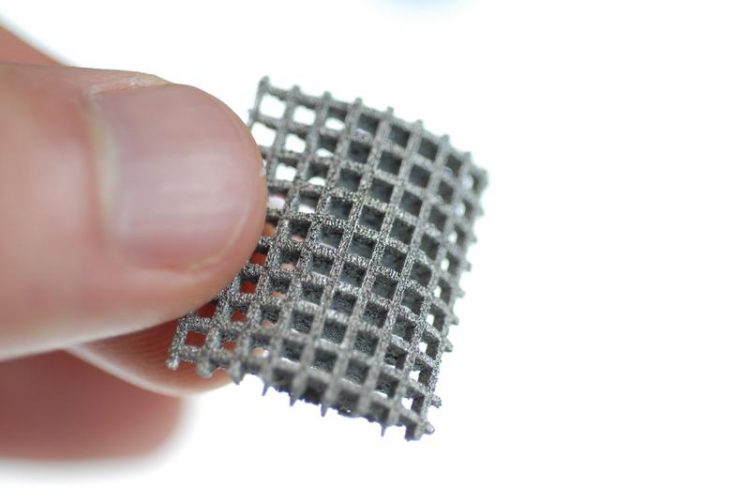Printing implants with the laser

Three-dimensional structures made of the form memory alloy nickel-titanium using laser additive processes. Photo: LZH
For this, scientists of the Surface Technology Group used a special form of 3-D printing – selective laser micro-melting (SLµM).
They were able to coat electrodes for pacemakers with platinum, and produce three-dimensional lattice structures made of NiTi as well as stent prototypes made of stainless steel. Within this project platinum has been – for the first time successfully – processed within micro scale.
Coated pacemaker electrodes
One way to lengthen the life of pacemakers is to intelligently adapt the form and surface of the electrodes. Platinum has excellent electrical conductivity characteristics, and it is bioinert. However, the metal has casting limitations, and it is hard to be worked on in the micro-range using conventional methods.
In the framework of this project, the scientists have developed an SLµM process for a platinum-iridium-alloy, and successfully coated implants.
Lattice structures made of shape memory alloys
The shape memory alloy NiTi is already widely used in medical technology. Micro-implants made of NiTi offer new possibilities for making tailor-made stents, or bone replacements for patients.
The scientists at the LZH have been able to successfully manufacture highly-complex, three-dimensional component structures made of NiTi. A resolution of up to 90 µm has already been reached for components, retaining all of the characteristics of the shape memory alloy.
Stent structures made of stainless steel
The use of stainless steel 316 L for SLµM processes has already been established. Within this project, stent structures with a closed cell design have been developed and produced. Their mechanical characteristics are similar to those of conventional stents.
The project was carried out together with the Institute for Biomedical Technology of the University of Rostock, as a subproject in the cooperative project “REMEDIS”. REMEDIS was supported by the German Federal Ministry for Education and Research (BMBF).
Media Contact
More Information:
http://www.lzh.de/All latest news from the category: Medical Engineering
The development of medical equipment, products and technical procedures is characterized by high research and development costs in a variety of fields related to the study of human medicine.
innovations-report provides informative and stimulating reports and articles on topics ranging from imaging processes, cell and tissue techniques, optical techniques, implants, orthopedic aids, clinical and medical office equipment, dialysis systems and x-ray/radiation monitoring devices to endoscopy, ultrasound, surgical techniques, and dental materials.
Newest articles

A ‘language’ for ML models to predict nanopore properties
A large number of 2D materials like graphene can have nanopores – small holes formed by missing atoms through which foreign substances can pass. The properties of these nanopores dictate many…

Clinically validated, wearable ultrasound patch
… for continuous blood pressure monitoring. A team of researchers at the University of California San Diego has developed a new and improved wearable ultrasound patch for continuous and noninvasive…

A new puzzle piece for string theory research
Dr. Ksenia Fedosova from the Cluster of Excellence Mathematics Münster, along with an international research team, has proven a conjecture in string theory that physicists had proposed regarding certain equations….



